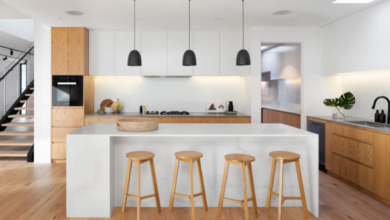Key Trends In The Home Construction Industry

The home construction industry continues to evolve rapidly, driven by new technologies, sustainability goals, and changing homeowner expectations. For home builders Tamworth, these shifts highlight the importance of innovation, adaptability, and a forward-thinking approach to design and project management. Today’s market demands homes that are efficient, flexible, and resilient; all while maintaining aesthetic appeal and affordability. Understanding these key trends helps builders, investors, and homeowners make smarter decisions for the future.
Sustainability and Energy Efficiency Take Center Stage
Sustainability is no longer a niche consideration; it’s a driving force behind modern home construction. Builders are prioritizing materials and methods that minimize environmental impact, including recycled and locally sourced materials, as well as advanced insulation and water-saving systems.
Energy efficiency remains a primary focus, with features such as solar panels, double glazing, heat pump systems, and passive design principles now common in new homes. Governments and consumers alike are pushing for higher energy ratings and lower carbon footprints. As a result, home builders are adapting by offering eco-conscious designs that also help homeowners reduce long-term utility costs.
Smart Home Technology Integration
Technology is transforming the way people live, and home construction is no exception. Smart home systems are now integrated into the early design phase, enabling seamless control of lighting, climate, security, and appliances via mobile devices or voice assistants.
This digital integration not only enhances comfort and convenience but also supports energy management. Builders who can incorporate smart home readiness into their standard offerings are seeing higher client satisfaction and increased property value. The ability to future-proof a home with adaptable wiring and automation capabilities has become a significant selling point.
See also: Style, Shade, and Comfort: The Benefits of Outdoor Blinds for Central Coast Homes
Prefabrication and Modular Building
Prefabricated and modular construction methods are redefining how homes are built. These techniques allow sections of a home to be manufactured in a controlled environment before being transported to the site for assembly.
The advantages are clear: reduced waste, shorter build times, and fewer weather-related delays. As supply chain issues and skilled labor shortages persist, modular building provides a reliable way to maintain quality while improving efficiency. Many construction companies are adopting hybrid approaches, combining traditional craftsmanship with off-site production to achieve the best of both worlds.
Design for Flexibility and Functionality
The way people use their homes has changed dramatically. Remote work, multi-generational living, and evolving lifestyle needs have inspired designs that emphasize adaptability.
Builders are increasingly focusing on open-plan spaces, flexible floor layouts, and multi-purpose rooms that can transform as family needs change. For example, a home office might double as a guest room or creative studio. Natural lighting, improved air circulation, and noise control have also become essential design considerations, ensuring comfort and productivity in every environment.
Focus on Quality and Transparency
In today’s competitive market, transparency and communication are just as important as craftsmanship. Clients expect builders to provide clear cost breakdowns, detailed inclusions lists, and honest project timelines.
Digital project management tools now allow clients to monitor progress, approve variations, and view updates in real time. Builders who establish open communication channels build stronger trust, reduce misunderstandings, and deliver smoother project experiences. As construction costs fluctuate, maintaining clarity around allowances and potential variations is key to customer satisfaction.
Healthier, More Resilient Homes
A growing awareness of indoor air quality and environmental health is influencing building choices. Low-VOC paints, formaldehyde-free materials, and improved ventilation systems are now standard expectations rather than luxuries.
Resilience has become a key concern. Homeowners want properties that can withstand extreme weather events and remain comfortable in changing climates. This has driven increased investment in durable materials, advanced waterproofing, and improved insulation — ensuring that homes stay safe and comfortable for decades.
Skilled Labor and Workforce Development
A major challenge facing the home construction industry is the shortage of skilled labor. As experienced tradespeople retire and demand for housing grows, builders are turning to training programs and apprenticeships to fill the gap.
There’s also a greater emphasis on upskilling workers in sustainable building techniques and new technologies. The future of the industry depends on cultivating a workforce that is both skilled and adaptable, capable of meeting evolving technical and environmental standards.
Conclusion
The home construction industry is undergoing a fundamental transformation; one shaped by innovation, sustainability, and changing lifestyle demands. For home builders tamworth, staying ahead means embracing new materials, smarter design, and client transparency. Builders who invest in technology, prioritize energy efficiency, and maintain strong communication will not only thrive but help shape the homes of tomorrow.
By understanding and implementing these key trends, home builders can continue to deliver value, efficiency, and enduring quality, ensuring that every project stands the test of time in both design and performance.



